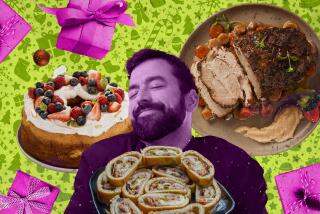Multicultural Manners : Happy New Year, Hold the Corn
- Share via
Amy, an ethnomusicologist, is excited about attending a Hmong New Year’s celebration. Part of the ritual for these Laotian natives consists of a feast where everyone contributes food. Amy sets down her corn pudding next to dishes of rice, chicken and pork.
At the end of the evening, Amy is mortified to discover that while all the other platters of food are empty, hers is still full. Not one of the nearly 1,000 people at the event even tasted her offering.
What went wrong?
There are about 90,000 Hmong in the United States. Most emigrated after the collapse of the Laotian government, when they feared retribution for aiding the CIA during the Vietnam War. The Hmong didn’t eat Amy’s corn pudding because, to them, corn is fit only for pigs, making it particularly offensive on their New Year’s table.
In their homeland, the Hmong celebrate the new year at the end of November or beginning of December. They have adjusted the date to coincide with the American holiday season but mark the event in traditional ways: deceased elders are honored, parents search for spouses for their children, and marriageable girls show off their domestic skills by wearing finely crafted hand-embroidered clothing.
Rule: New Year’s can be as different as the culture observing it, from the dates celebrated to the foods eaten to the meaning of the holiday.
Norine Dresser is a folklorist and author of “I Felt Like I Was From Another Planet,” (Addison Wesley). Tell her your experiences c/o Voices.
More to Read
Sign up for Essential California
The most important California stories and recommendations in your inbox every morning.
You may occasionally receive promotional content from the Los Angeles Times.













